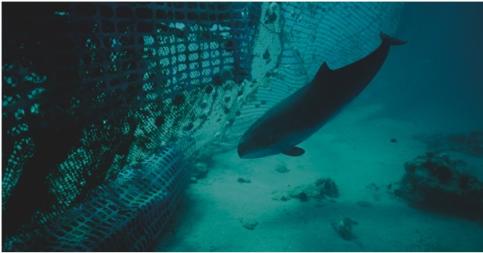Introduction

Despite being able to locate gillnets with echolocation, harbor porpoises (Phocoena phocoena) often get entangled in them and drown. It has been estimated that the bycatch of harbor porpoises in gillnet fisheries in northern European waters lies above several thousand on a yearly basis.
One of the many hypotheses as to why harbor porpoises are caught in gillnets, is that they do not pay enough attention to their surroundings while pursuing a fish, and thereby swim into the net without detecting it. Therefore, devices called pingers that transmit deterrent sounds have been developed and have proven to be efficient in reducing the bycatch of harbor porpoises in gillnets, by attracting the porpoises’ attention towards the nets, which then makes the porpoises click on the net and thereby discover it.
However, a negative side effect is that pingers also work as “dinner bells” to seals, i.e. attracting seals to the fishing gear. Contrary to harbor porpoises, seals use the nets as a food resource, eating the fish entangled in the nets. Therefore, fishermen in the Baltic are very reluctant to use pingers, and often refrain from using them.
By not using pingers on their fishing gear the critically endangered Baltic Sea subpopulation of harbor porpoises is put at great risk. International conservation plans therefore recommend that pingers not audible to seals should be developed.
AIM OF PROJECT
In this project, it was tested whether modified pinger sounds would deter harbor porpoises away from the vicinity of a pinger inaudible to seals.
Responsible for this page:
Director of undergraduate studies Biology
Last updated:
05/19/17
